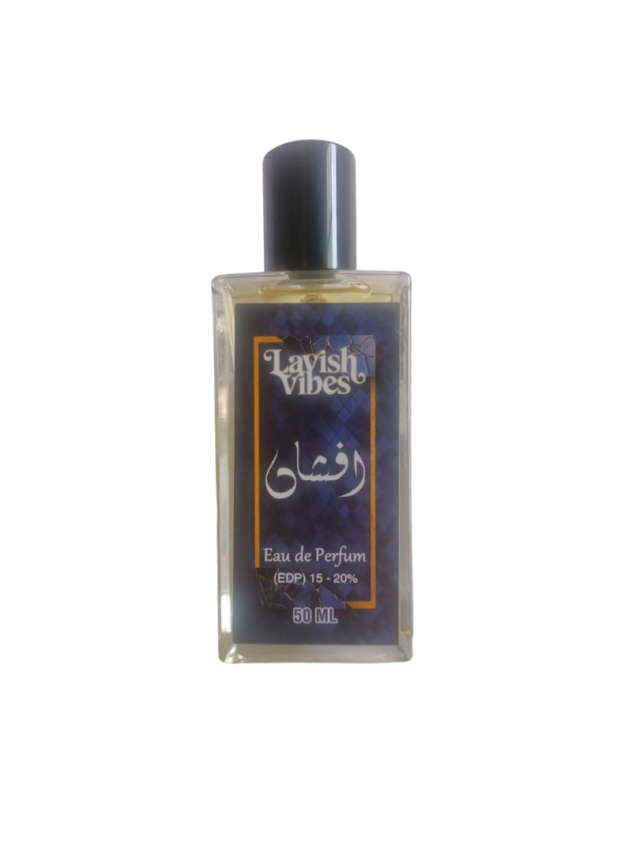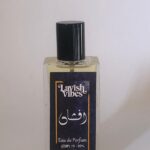Attar: A Deep Dive into the World of Traditional Fragrance
Attar, also known as ittar or ittar, is an ancient and highly revered form of fragrance that has been cherished for centuries in many cultures, particularly in the Middle East, South Asia, and parts of Africa. It is known for its exquisite and pure essence, made entirely from natural ingredients, offering a unique and long-lasting scent experience. In this blog, we will explore what attar is, its history, types, uses, benefits, and why it remains a popular choice for fragrance lovers around the world.
What is Attar?
Attar is a traditional, alcohol-free perfume made by distilling flowers, herbs, spices, and other botanicals into essential oils. Unlike modern perfumes, which are often chemically synthesized and mixed with alcohol, attars are crafted entirely from natural plant-based ingredients. These fragrances are typically oil-based and have a smooth, rich, and deep scent that lingers for hours.
The word “attar” is derived from the Arabic word “itr”, meaning fragrance or perfume. While attars are mostly known in the Middle East and Asia, their roots trace back to the early civilizations of India, Persia, and the Arabian Peninsula. The art of making attar is an age-old tradition that involves distillation methods passed down through generations.
History of Attar
Attar has a long and fascinating history that dates back to more than a thousand years. The origins of attar are closely associated with the art of perfume-making in the Indian subcontinent and the Arab world. Ancient records indicate that attars were first created in India, where skilled perfumers began extracting scents from flowers, woods, and spices.
The spread of attar to the Arabian Peninsula is linked to the flourishing of trade routes between India, Persia, and the Middle East. As early as the 10th century, the art of perfume making had been perfected in India, and from there, it found its way to other parts of the world. Indian perfumers created intricate distillation techniques to extract the purest oils from flowers like jasmine, rose, and sandalwood.
In the 14th century, the famous Persian physician and scholar, Ibn Sina (Avicenna), is credited with inventing the distillation process of essential oils. His work laid the foundation for modern perfumery, which eventually evolved into the creation of attars.
During the Mughal Empire, attar became a luxury item favored by royalty. Mughal emperors were known for their love of attars, and the art of attar-making flourished during their reign. In fact, many of the fragrances created during this time are still popular today.
Attar continued to grow in popularity and was even used in religious and cultural ceremonies. The absence of alcohol in attar made it highly sought after in Muslim-majority countries, where alcohol consumption was forbidden. The pure, natural essence of attars also made them ideal for spiritual practices, meditation, and prayer.
Types of Attar
Attars come in various types, each made from different botanical ingredients, and each offering its unique fragrance profile. Some of the most popular types of attars include:
1. Rose Attar
Rose attar is one of the most beloved and well-known attars worldwide. Made from rose petals, this attar is sweet, floral, and soft, offering a sense of calm and relaxation. The roses used in rose attar are often from the renowned Damask rose or other varieties known for their strong fragrance.
2. Sandalwood Attar
Sandalwood attar is another popular fragrance made from the precious sandalwood tree. Sandalwood has a rich, woody, and earthy scent that is calming and grounding. Sandalwood attars are often used for meditation and spiritual practices due to their soothing and tranquil qualities.
3. Oudh (Agarwood) Attar
Oudh, also known as agarwood, is one of the most luxurious and exotic attars. It is derived from the resin of the Aquilaria tree, and its scent is intense, woody, and smoky. Oudh attar is often used in high-end perfumes and is highly prized in the Middle East and South Asia.
4. Jasmine Attar
Jasmine attar is made from the delicate jasmine flower and is known for its sweet, floral, and exotic aroma. Jasmine attar is highly prized for its aphrodisiac qualities and is often used in perfumes designed to evoke romance and sensuality.
5. Musk Attar
Musk attar is derived from the musk pod of the musk deer, but modern musk attars are usually synthetic or created from plant-based ingredients. The scent of musk is deep, warm, and animalistic, and it is often used as a base note in many attars and perfumes.
6. Mitti Attar
Mitti attar, or clay attar, is a unique fragrance made from the essence of earth and soil. This attar is often used for its grounding and calming effects. It has a fresh, earthy, and natural aroma that is highly cherished in traditional South Asian cultures.
7. Amber Attar
Amber attar is created using a blend of different floral, woody, and spicy ingredients to give a warm, musky, and rich fragrance. Amber attar is often used in luxurious perfumes and is known for its long-lasting fragrance.
8. Lavender Attar
Lavender attar has a calming and soothing fragrance, making it popular for use in aromatherapy. This attar is made from the lavender flower and is known for its fresh, floral, and herbal scent.
9. Vetiver Attar
Vetiver, also known as khus, is a grass that is native to India. Vetiver attar has an earthy, woody, and smoky fragrance, and it is widely used for its calming and grounding effects. It is often used in perfumes meant for both men and women.
10. Agarwood (Oudh) Attar
Known for its rich and smoky scent, agarwood attar is produced from the resin of the agarwood tree. The fragrance of agarwood is highly revered in Middle Eastern cultures and has been used for centuries as an incense and perfume.
The Process of Making Attar
The process of making attar is intricate and requires significant skill and expertise. It involves two main stages: distillation and infusion.
1. Distillation
The distillation process is central to producing attar. It involves extracting the essential oils from flowers, leaves, herbs, and woods. In the traditional method, botanicals are placed in a copper still, where steam is passed through the plant material. As the steam passes through, the essential oils are vaporized and then condensed into a liquid form.
2. Infusion
Once the essential oils are collected, they are infused into a base oil, such as sandalwood oil or jojoba oil. The infusion process allows the fragrance to develop over time and creates a rich, lasting scent. Some attars may take weeks or even months to develop fully, as the oils mature and blend to create a harmonious fragrance.
The quality of attar is often determined by the purity of the ingredients and the skill of the perfumer. High-quality attars are carefully crafted using the finest ingredients and the most precise distillation techniques.
Uses and Benefits of Attar
1. Natural Fragrance
One of the most popular reasons people use attar is as a natural fragrance. Attars are free from synthetic chemicals and alcohol, making them a healthier option for those with sensitive skin or allergies. The long-lasting scent of attars makes them a popular choice for daily wear.
2. Spiritual and Meditation Use
Attars have a long tradition of being used in religious ceremonies, meditation, and spiritual practices. Their calming, soothing properties help to create a serene atmosphere for prayer and mindfulness.
3. Skin Care
Some attars, such as rose attar or sandalwood attar, have natural antibacterial and anti-inflammatory properties, making them excellent for skin care. They can be used as a gentle moisturizer or as a treatment for skin irritation and acne.
4. Aromatherapy
Attars are widely used in aromatherapy due to their calming and therapeutic effects. For instance, lavender and jasmine attars are known for their stress-relieving and mood-enhancing properties.
5. Cultural Significance
In many cultures, attars are a symbol of luxury and status. They are often gifted during weddings, festivals, and other special occasions. Attars also play a significant role in religious and cultural practices, especially in the Middle East and South Asia.
Why Attar is Still Popular
Despite the rise of synthetic perfumes, attar has maintained its popularity, particularly among those who prefer natural and alcohol-free products. Here are some reasons why attar remains a preferred fragrance:
1. Natural Ingredients
Attars are made from 100% natural ingredients, making them an excellent choice for those who want to avoid chemicals and synthetic fragrances.
2. Long-Lasting Fragrance
Due to their oil-based composition, attars tend to last much longer than alcohol-based perfumes. The fragrance can last from several hours to even days on the skin.
3. Alcohol-Free
Many people, particularly in Muslim-majority countries, prefer alcohol-free perfumes. Since attar is made without alcohol, it is considered more suitable for use in religious and cultural contexts.
4. Unique and Personal
Each attar is unique, and the distillation process allows for the creation of custom fragrances. This personal touch makes attars a cherished and individualized fragrance choice.
Conclusion
Attar is not just a fragrance; it is a piece of history, a testament to ancient craftsmanship, and a product that continues to captivate fragrance enthusiasts worldwide. Whether you are looking for a natural and long-lasting fragrance, seeking spiritual benefits, or simply indulging in a luxurious scent, attar offers a unique and authentic experience. With its deep-rooted cultural significance and timeless appeal, attar is more than just a perfume – it is an olfactory journey through the ages.
As attars continue to evolve with modern trends, they remain a cherished part of the global fragrance industry, providing a luxurious, natural alternative to synthetic perfumes. Whether you’re a seasoned attar enthusiast or a newcomer to the world of natural fragrances, the allure of attar is undeniable and will continue to enchant for generations to come.
This blog provides a comprehensive overview of attar, its history, types, benefits, and uses. It serves as a complete guide for those interested in understanding the significance and appeal of this timeless fragrance.


